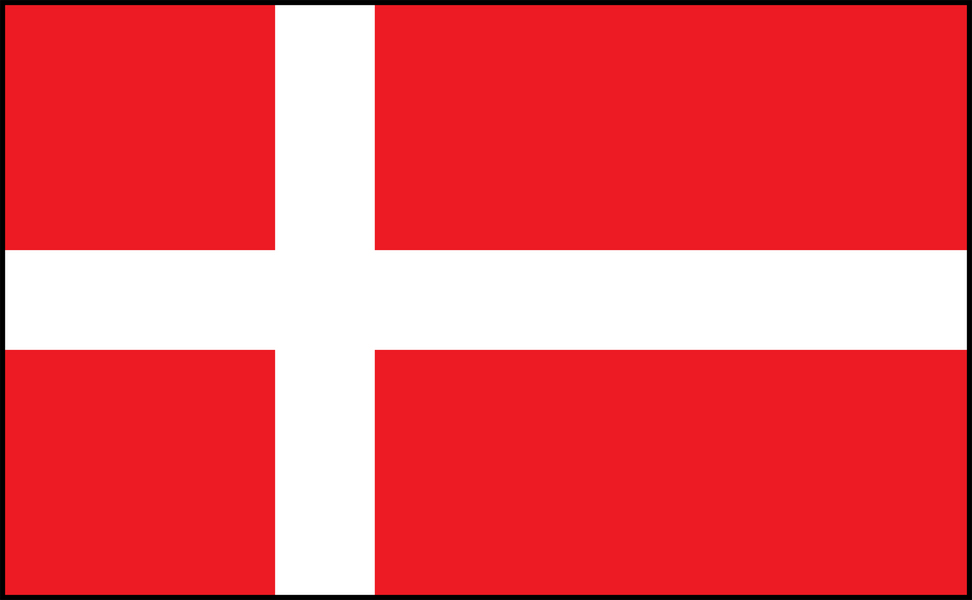Interesting Denmark Facts
Denmark is a coastal country located in Northern Europe where it is bordered by Germany, the Baltic Sea and North Sea. It spans across 2,210,570 km2 of land. It is estimated that the population of Denmark is more than 5,733,551.
Find out interesting Denmark facts and information about this European country with our fact file for kids. Discover important facts about the location, currency, flag, continent, language, population, size, climate, people, geography, landscape, landmarks and culture of Denmark.
Identify important information about Europe with our interesting Denmark facts for kids based on questions such as: What continent is Denmark in? What is the climate like in Denmark? What is the geography of Denmark like? What is the culture of Denmark like? What is the capital city of Denmark?
Denmark Fact File: Continent: Europe * Country Name(s): Denmark, Kingdom of Denmark * Location: Northern Europe * Bordering: Germany, the Baltic Sea and North Sea * Capital City: Copenagen * Size: 2,210,570 km2 * Estimated Population: over 5,733,551 * Currency: Danish krone (DKK) * Language(s): Danish * Country Code: +45
Interesting Denmark Facts for Kids
Interesting Facts for Kids 1: Size & location facts
Denmark forms part of the continent of Europe, where it has a coastal position and is bordered by Germany, the Baltic Sea and North Sea. Denmark, along with Finland, Sweden, Iceland and Norway, form the Nordic countries. There are seven continents in the world: Asia, Africa, North America, South America, Europe, Antarctica, Australia (Oceania). Europe is the second smallest continent in the world, it has 51 countries, with some countries belonging to both Europe and Asia, stretches across a total area size of 10,180,000 km2 and forms 6.8% of the landmass of the world. Denmark is a coastal country that spans a total area of approximately 2,210,570 km2. It is a country of average size when compared to other countries belonging to Europe. However, when taking into account, Denmark's territory of Greenland, it becomes the twelth largest country in the world. Greenland spans a huge area of more than 2.1 million km2.
Interesting Facts for Kids 2: Population facts
The population of this European country is more than 5,733,551 people. The majority of Denmark's inhabitants reside in Copenhagen which is the country's most populous city. Denmark has an average population when compared to most other countries across the world, its overall population density is approximately 129 people per sq km. The estimated population of Europe is approximately 738,442,000 inhabitants, making it the continent with the second smallest population in the world. The continents in order of population, starting with highest population first, are: Asia, Africa, North America, South America, Europe, Australia (Oceania Region) and Antarctica. The total population of the entire world is in excess of 7.6 billion people.
Interesting Facts for Kids 3: Capital & major cities
Denmark's capital city is called Copenhagen. The names of other major cities situated in this country are Aarhus, Odense, Aalborg, Frederiksberg and Esbjerg.
Interesting Facts for Kids 4: Country borders
The following border information provides details on the length of Denmark's borders:
Coastline 7,314 km, Germany 140 km.
Interesting Facts for Kids 5: Climate and geography facts
Denmark has a temperate climate with cool summer temperatures and mild, cloudy winters. The geography of Denmark can be described as consisting mainly of lowland, rolling plains and coastal regions. The lowest point of Denmark is the Lammefjord at -7m, and the highest point of elevation is Mollehoj/Ejer Bavnehoj at 171m.
Interesting Facts for Kids 6: Natural Resources of Denmark
Natural resources are materials and substances that can be found occurring naturally on Earth. Natural resources are very important across the world, and can be exploited for economic gain. The level of resources that occur naturally in an individual country are influenced by varying factors such as the geography, climate and location of that country. Some countries are very rich in natural resources, where as others have limited to none. Countries that have particularly rich resources include Russia, The United States, Saudi Arabia and Canada. Food, transport and construction are three of the primary uses of natural resources. For example, fish is a naturally occurring resource that can be caught for food consumption. Crude oils can be refined into different types of fuels in order to power vehicles/cars. Wood/timber from forests can be used to build homes and furniture. The natural resources found in Denmark include natural gas, petroleum, fish, arable land suitable for growing crops, salt, limestone, chalk, stone, gravel and sand.
Interesting Facts for Kids 7: Language facts
The official language of Denmark is Danish. Other languages that are spoken by a small percentage of the population include Faroese, Greenlandic and German.
Interesting Facts for Kids 8: Religion facts
The main religion of Denmark is Evangelical Lutheran at approximately 76% of the population. Around 4% are Muslim. The remaining population either belongs to other religions or no religion at all.
Interesting Facts for Kids 9: Symbols of Denmark
Every country has its own unique culture, history and identity. Flags, symbols, emblems, mottos, songs, anthems and colors are used by countries across the world to represent national pride and identity. These national symbols are forged through a nation's unique history and can represent both hardship and prosperity, embodying freedom, strength and unity. Flags, emblems, songs, mottos and colors reflect the past, present and future hopes of a country, and create an important image to the rest of the world. National symbols can include a mixture of things that are symbolic to a nation such as wildlife, plants, geographical features, crops, tools of agriculture, and tools of war. The following facts depict some of the national symbols, songs and colors that are important to Denmark:
National symbol(s): lion, mute swan
National colors: red and white
National Anthem/Song: Der er et yndigt land (Translation: There is a Lovely Land); Kong Christian (Translation: King Christian)
National Holiday(s): Constitution Day, 5 June (1849)
